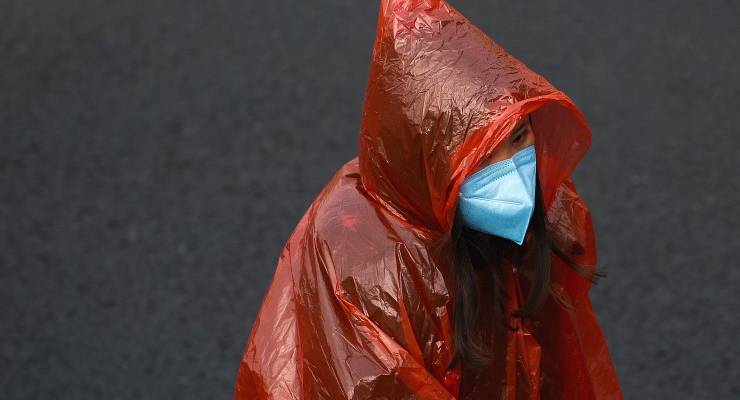
A serious COVID-19 outbreak in China’s north-east has seen new infections suddenly soar close to the 1000 mark, jolting the country’s government into action.
It’s the first sign that the Communist Party’s assumed control of the disease (and growing hubris) may have been misplaced — at least for now.
It comes less than a week after Chinese authorities finally added to Wuhan’s death toll, increasing it by an alarmingly neat 50% to 3869.
This has been seen as an effort to placate world governments and observers across the globe who have been struggling to believe the numbers the ruling Communist Party was originally producing — particularly given reports of tens of thousands of funeral urns sent to the original epicentre in Wuhan.
The new COVID-19 hotspot is around the far flung city of Harbin, capital of Heilongjiang province, which is home 38 million people and shares a lengthy border with the Russian Federation.
With a population of 10 million, Harbin is famous for its ice festival held in the depth of a frigid winter where temperatures in January reach average lows of -23 Celcius.
The rise in cases has been attributed to locals returning from Russia, with dozens of people on incoming planes being identified and put under medical care.
Wary of another Wuhan, lockdown and quarantine rules introduced earlier this month have been some of the harshest and most stringent in the world: a full 28 days of quarantine for all arrivals from abroad, who must then submit for two nucleic acid tests and an antibody each.
For residences where any confirmed or asymptomatic cases are found, a 14-day lockdown has been imposed. These were strengthened mid week with non-locals or non-locally registered vehicles banned from entering the city.
According to a new study published in The Lancet by academics at Hong Kong University’s School of Public Health, China seems to have undercooked its COVID numbers by 75%.
It estimates that more than 232,000 people may have been infected in the first wave of COVID-19, while the Chinese government reported fewer than 56,000 cases as of February 20. The paper puts the discrepancy down to fast-changing definition of cases, and estimates previous numbers using the current definition.
The Harbin spike carries a number of warnings against complacency, porous borders and the perils of plane travel as well as the power of one person to trigger an outbreak. A Reuters report identified a lone, 87-year-old man who had infected 78 people, including family members, hospital patients and their families, and doctors and nurses in direct or indirect contact.
The spike has cast doubts over the veracity of Russia’s figures — officially 57,000 with only 513 deaths — amid fears a potentially unreported catastrophe may be playing out.
There are lessons for Australia (and elsewhere) in the emergence of a new COVID-19 hotspot in China, representing a so-called second wave of the disease — something already predicted by virologists.
In addition to China, Singapore — previously feted for its swift action and control of the disease — has seen a second wave of infections in the past week. The culprit: cramped and poor-quality dormitories for migrant workers, mainly for males from India and Sri Lanka where there has been a surge in infections.
Even more problematically, tracing had proven difficult and at times impossible. Two weeks ago Singapore had fewer cases than Australia. As of April 24, it had 11,178 confirmed cases compared to Australia’s 6661, but with only 12 deaths compared with 76 in Australia.
Like the Russian border was for China, the migrant worker’s dormitories were a “blind spot” for Singapore’s government.
Still, Singapore has also delivered a humanitarian lesson for similarly wealthy Australia. Here, trapped migrant workers, backpackers and international students who have lost work have been left out from the Morrison government’s bumper safety-net package, told to “go home” if they cannot support themselves.
Meanwhile, Singapore PM Lee Hsien Loong said that foreign workers will be taken care of. “We will look after your health, your welfare and your livelihood,” he said.
That advocating of human rights is overdue as the situation in Singapore has shone a harsh light in the way the city-state treats its poorly paid migrant workers, who are so dismissed that authorities could not perceive their harsh living conditions as a virus threat.








Crikey is committed to hosting lively discussions. Help us keep the conversation useful, interesting and welcoming. We aim to publish comments quickly in the interest of promoting robust conversation, but we’re a small team and we deploy filters to protect against legal risk. Occasionally your comment may be held up while we review, but we’re working as fast as we can to keep the conversation rolling.
The Crikey comment section is members-only content. Please subscribe to leave a comment.
The Crikey comment section is members-only content. Please login to leave a comment.